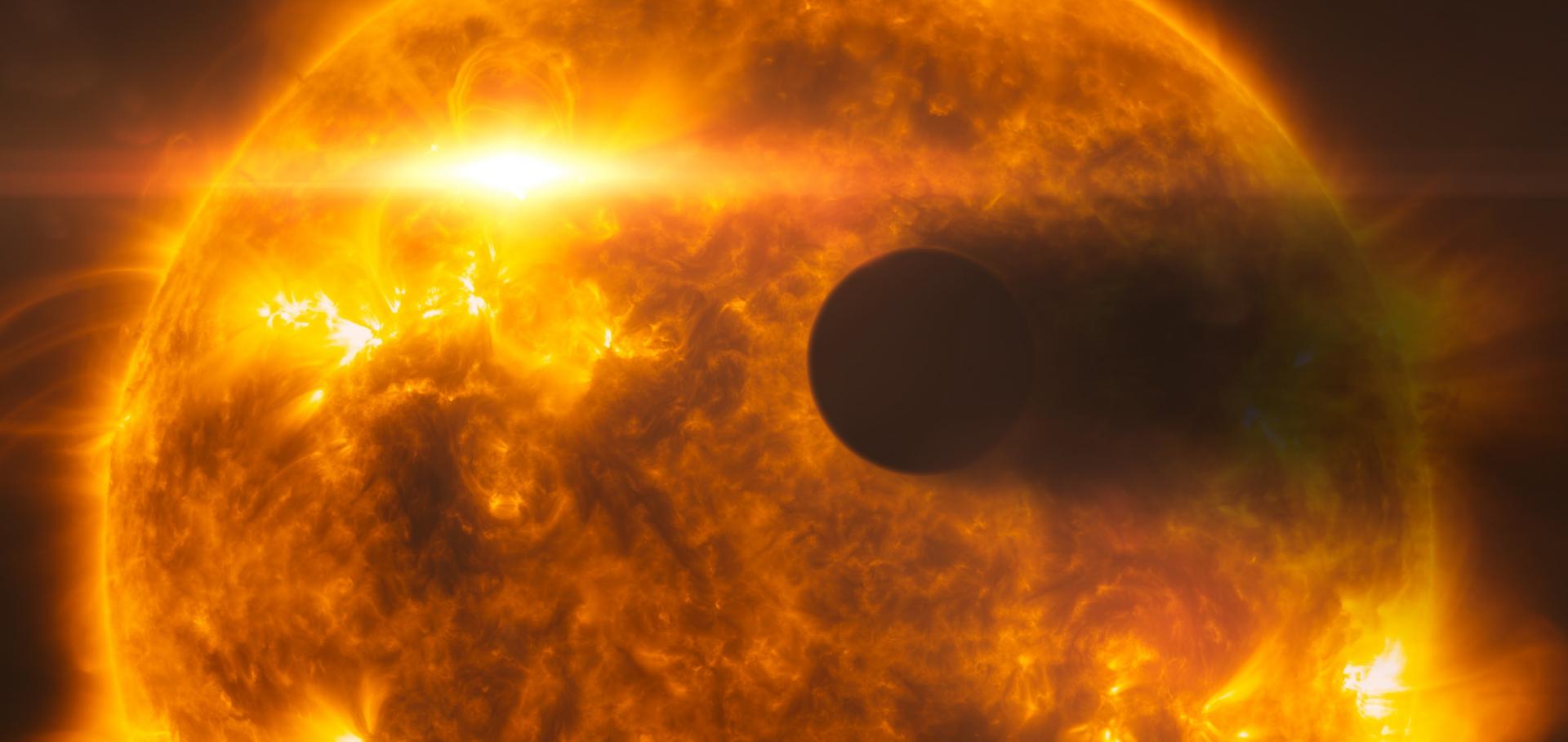An 11 Earth-mass, Long-period Sub-Neptune Orbiting a Sun-like Star
ASTRONOMICAL JOURNAL American Astronomical Society 158:4 (2019) ARTN 165
Abstract:
© 2019. The American Astronomical Society. All rights reserved.. Although several thousands of exoplanets have now been detected and characterized, observational biases have led to a paucity of long-period, low-mass exoplanets with measured masses and a corresponding lag in our understanding of such planets. In this paper we report the mass estimation and characterization of the long-period exoplanet Kepler-538b. This planet orbits a Sun-like star (V = 11.27) with M∗ =0.892-0.035+0.051 and R∗ = 0.8717-0.0061+0.0064 R o. Kepler-538b is a 2.215-0.034+0.040 R ⊕ sub-Neptune with a period of P = 81.73778 ± 0.00013 days. It is the only known planet in the system. We collected radial velocity (RV) observations with the High Resolution Echelle Spectrometer (HIRES) on Keck I and High Accuracy Radial velocity Planet Searcher in North hemisphere (HARPS-N) on the Telescopio Nazionale Galileo (TNG). We characterized stellar activity by a Gaussian process with a quasi-periodic kernel applied to our RV and cross-correlation function FWHM observations. By simultaneously modeling Kepler photometry, RV, and FWHM observations, we found a semi-amplitude of K = 1.68-0.38+0.39 m s-1 and a planet mass of Mp = 10.6-2.4+2.5 M ⊕. Kepler-538b is the smallest planet beyond P = 50 days with an RV mass measurement. The planet likely consists of a significant fraction of ices (dominated by water ice), in addition to rocks/metals, and a small amount of gas. Sophisticated modeling techniques such as those used in this paper, combined with future spectrographs with ultra high-precision and stability will be vital for yielding more mass measurements in this poorly understood exoplanet regime. This in turn will improve our understanding of the relationship between planet composition and insolation flux and how the rocky to gaseous transition depends on planetary equilibrium temperature.An 11 Earth-mass, long-period Sub-Neptune orbiting a Sun-like star
Astronomical Journal American Astronomical Society 158:4 (2019) 165-165
Abstract:
Although several thousands of exoplanets have now been detected and characterized, observational biases have led to a paucity of long-period, low-mass exoplanets with measured masses and a corresponding lag in our understanding of such planets. In this paper we report the mass estimation and characterization of the long-period exoplanet Kepler-538b. This planet orbits a Sun-like star (V = 11.27) with = - M + 0.892 0.035 0.051* Me and R =* - + 0.8717 0.0061 0.0064 Re. Kepler-538b is a - + 2.215 0.034 0.040 R⊕ sub-Neptune with a period of P = 81.73778 ± 0.00013 days. It is the only known planet in the system. We collected radial velocity (RV) observations with the High Resolution Echelle Spectrometer (HIRES) on Keck I and High Accuracy Radial velocity Planet Searcher in North hemisphere (HARPS-N) on the Telescopio Nazionale Galileo (TNG). We characterized stellar activity by a Gaussian process with a quasi-periodic kernel applied to our RV and cross-correlation function FWHM observations. By simultaneously modeling Kepler photometry, RV, and FWHM observations, we found a semi-amplitude of = -+ K 1.68 0.38 0.39 m s−1 and a planet mass of = - M + p 10.6 2.4 2.5 M⊕. Kepler-538b is the smallest planet beyond P = 50 days with an RV mass measurement. The planet likely consists of a significant fraction of ices (dominated by water ice), in addition to rocks/metals, and a small amount of gas. Sophisticated modeling techniques such as those used in this paper, combined with future spectrographs with ultra high-precision and stability will be vital for yielding more mass measurements in this poorly understood exoplanet regime. This in turn will improve our understanding of the relationship between planet composition and insolation flux and how the rocky to gaseous transition depends on planetary equilibrium temperature.Planet Hunters TESS I: TOI 813, a subgiant hosting a transiting Saturn-sized planet on an 84-day orbit
(2019)
Radial velocity confirmation of K2-100b: a young, highly irradiated, and low-density transiting hot Neptune
MONTHLY NOTICES OF THE ROYAL ASTRONOMICAL SOCIETY Oxford University Press (OUP) 490:1 (2019) 698-708
Abstract:
© 2019 The Author(s) Published by Oxford University Press on behalf of the Royal Astronomical Society We present a detailed analysis of HARPS-N radial velocity observations of K2-100, a young and active star in the Praesepe cluster, which hosts a transiting planet with a period of 1.7 d. We model the activity-induced radial velocity variations of the host star with a multidimensional Gaussian Process framework and detect a planetary signal of 10.6 ± 3.0 m s−1, which matches the transit ephemeris, and translates to a planet mass of 21.8 ± 6.2 M. We perform a suite of validation tests to confirm that our detected signal is genuine. This is the first mass measurement for a transiting planet in a young open cluster. The relatively low density of the planet, 2.04+−006661 g cm−3, implies that K2-100b retains a significant volatile envelope. We estimate that the planet is losing its atmosphere at a rate of 1011–1012 g s−1 due to the high level of radiation it receives from its host star.Radial velocity confirmation of K2-100b: a young, highly irradiated, and low density transiting hot Neptune
(2019)


